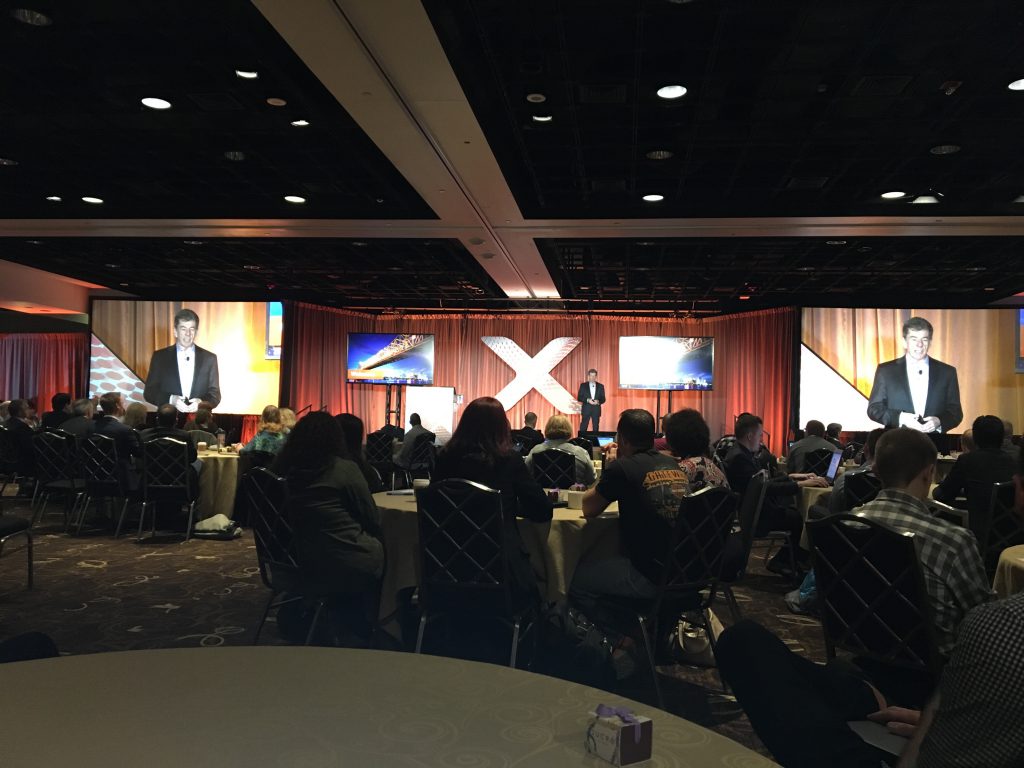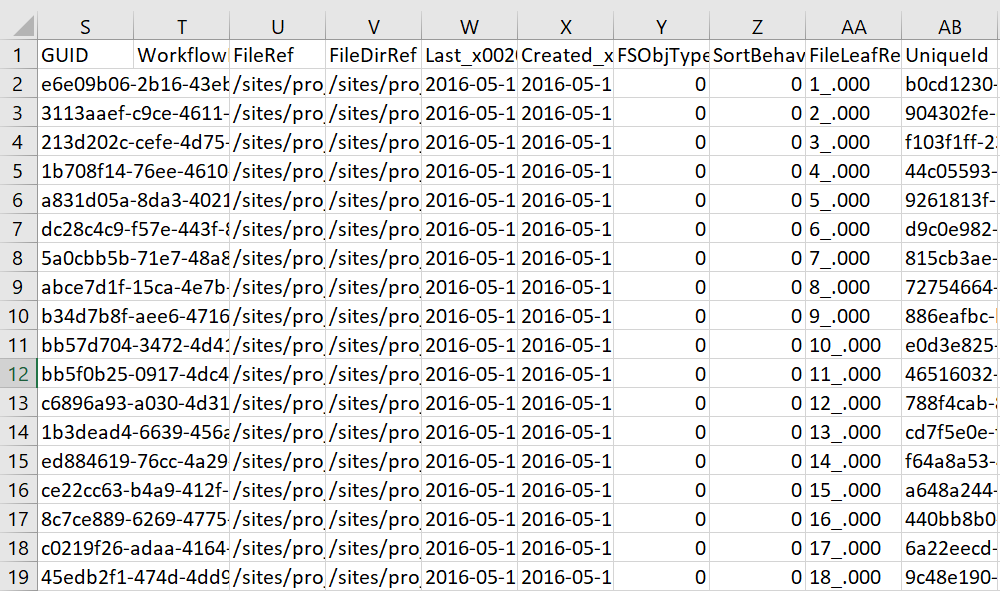It’s bittersweet for me to announce that I will both be leaving Rightpoint and the realm of SharePoint consulting too. I’ll share more details in the coming weeks, but I want to make one request to clients before I go: please don’t display the weather on your intranet’s homepage.
How to Use SharePoint PNP to Create a Site Inventory Script
Content inventory scripts are essential for me, my teammates, and my clients. Often though, I find myself re-writing scripts because Client A wants these fields, and Client B wants those fields. To save me the headache of writing a new script every time, I wanted an inventory script that retrieves every field. I was tired of using CSOM scripts for inventory, so instead decided to try using PNP for inventory. Now instead of writing a new script every time, all I need to do is delete columns in Excel instead.
I’ve used PNP for provisioning, but never for inventory. I found that by using PNP the inventory script was much quicker to write and was much more powerful.
Continue reading “How to Use SharePoint PNP to Create a Site Inventory Script”
Add Angular to a SharePoint Master Page
SharePoint Development is all about preferences. While there’s about six ways to do everything in SharePoint, I think a lot of the content out there about using Angular with SharePoint is mediocre at best. While those solutions may work, I don’t believe they’re scalable or the correct approach. In this post and some of the following posts, I’ll talk about different how you can easily get a SharePoint project up and running using Angular.
InspireX 2017 Recap
Nintex’s InspireX conference is in its second year. I had the pleasure of not only attending but also speaking at this year’s conference. After attending many sessions and having conversations with partners and customers, I’m happy to report that the product suite is healthier than ever and it’s a great time to be building solutions with Nintex products. Let me recap some key things I learned from this conference and where I think the product is going.
Xtensions
A common theme at the conference is that things need to talk to each other. We shouldn’t have to jump around between different systems to complete our processes. Nintex is addressing this with Xtensions. Available in the Nintex Workflow Cloud (NWC), Xtensions allow your workflow to interact with other systems. Basically, this allows users to create their own connectors between the workflow and whatever “thing” the workflow needs to talk to. In several demos, this was showcased; a workflow turned on a IOT lightbulb, and a Raspberry Pi with a microphone initiated a workflow to let us know it was getting too loud.
All of this is done using Swagger. It is rather powerful in several ways. First, you’re not dependent on waiting on Nintex to release a connector; you can develop one yourself. But with Swagger, you can call other operations within the same Swagger definition. Basically you can chain things together, but in a single action. Because of this, Xtensions to me seem like a best of both worlds between a User Defined Action and a connector. I’m really excited to see what’s possible with this. As the platform moves away from being “SharePoint-first” towards more of a workflow-as-a-service, this functionality is going to be key to NWC’s success.

Hawkeye
The star of last year’s InspireX had several sessions this year – including one by me, your humble narrator. This year Nintex talked about where they want to go with Hawkeye. While rolling out more lenses and support for the entire Nintex platform (Workflow, O365, NWC) is great, I am most intrigued by the concept of an “Instance Pathway.”
Think of all the branches and paths within a workflow. There’s a lot of permutations as to how the workflow can go. An instance pathway would figure out all these. The thought is by defining an instance pathway, more information can be gleaned from the workflow. For example, Hawkeye can look at a particular pathway and report that there are X-many actions in the pathway. I can see this being used to further drill down into workflows and gain more knowledge about how certain actions are behaving.
This functionality might be forthcoming, but I liked the vision that Nintex is displaying. To me it shows they’re committed not only to Hawkeye, but allowing and enabling users to make great workflows that can be adjusted and corrected over time. Having functionality that allows users to be reflective and introspective about their workflows in my opinion will help drive not only adoption – both of workflow and Hawkeye – but drive users to create future-ready solutions for their organization.
Forms
Nintex Forms has been around for a little while, but it is getting an overhaul. The most exciting functionality announced is responsive forms. Coming to on-prem and NWC, users creating forms can choose between a pixel perfect form (aka current state) or a responsive form. A responsive form lets form authors drag and drop controls. Need to change the order? No need to move all the controls manually; it happens automagically! Responsive forms would allow us the ability to move away from using different layouts per device. Overall, the responsive forms look very slick and I cannot wait to use it myself.
There’s other functionality that’s forthcoming which appeals more towards developers (hello save and continue!), but responsive forms is the shot in the arm that Nintex Forms needed.

The Ubiquitous Cloud
The word cloud is pervasive nowadays. Based on the topics at InspireX, cloud software and applications will be more ubiquitous as they permeate our workflows. There were a lot of great discussions about Internet of Things, Azure Functions, Microservices and the like. As more operations use these kinds of resources, it’s only a matter of time before these topics integrate into our workflows. Whether they’re legacy workflows or new workflows, cloud, and the many capabilities it provides, are going to change how we build and think about workflows. My earlier comments about Xtensions just document the “how” not the “what” that cloud solutions can provide to workflows.
In the keynote presentation, Nintex spoke about how their mission is to improve how people work. Connecting a device is one thing, but as Peter Coffee noted we need to move beyond connecting to a smart device and instead focus on having them collaborate. While the phrase “digital transformation” was used a few times at the conference, it makes sense that however your digital transformation manifests itself in your organization, that workflow will be a part of that journey.
Closing Thoughts
I believe 2017 this will be an interesting year for Nintex. While there were not any product announcements like last year, the diversity of topics and depth, leads me to believe that we are living in an exciting time for building solutions with Nintex. In my post at the conclusion of InspireX last year, I said:
With [Hawkeye], the new mobile features, and a forthcoming workflow-as-a-service offering, Nintex seems to be set up for great things in 2016 and beyond. But it’s not just great things with the Microsoft stack. Integrations with other platforms are very promising too. The future of creating solutions with Nintex is so bright, you have to wear shades.
In 2017 I still stand by the statement. Nintex is going to be not only exciting to watch in 2017, but exciting to use. Visiting InspireX is like taking workflow communion and it’s great to see that the community is so fervent about solving problems.
I’m Speaking at InspireX

I’m happy to announce I’ll be speaking at Nintex’s InspireX conference which takes place in New Orleans, February 13-15. My session is called “Dashboard Eye for the Workflow Gal and Guy.” I’ll be speaking about Nintex Hawkeye and Power BI. I will show how you can build great looking dashboards that are not only easy on the eyes, but are easy to create, and full of meaningful data to you and your organization.
Didn’t attend InspireX last year? Read my three part recap here, here, and here.
Register for this year’s conference using this link. See you there!

